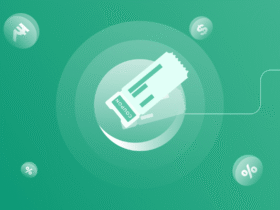Introduction: Tracing the Evolution and Future of Web Design
A Brief History of Web Design
Web design has dramatically transformed from the simplistic, text-heavy pages of the early internet to today’s dynamic and visually engaging websites. Initially focused on functionality, early web designs were limited by the capabilities of basic HTML. As the internet evolved, technologies like CSS and JavaScript revolutionized web pages by separating content from design, which allowed for more complex and aesthetically pleasing layouts. The advent of responsive design further refined the user experience, ensuring compatibility across various devices.
The Impact of Emerging Technologies on Web Design
Looking ahead, emerging technologies such as Artificial Intelligence (AI), Augmented Reality (AR), and Virtual Reality (VR) are poised to redefine the boundaries of web design. AI is streamlining design processes by automating tasks like layout creation and image optimization, making web design more accessible and efficient. AR and VR are enhancing user interaction, offering immersive experiences that were once unimaginable on web platforms. Additionally, the trend towards sustainable web design is prompting designers to minimize the environmental impact of their digital creations by optimizing resources and reducing energy consumption.
In essence, the future of web design is geared towards creating more intuitive, accessible, and environmentally friendly digital spaces that resonate with a global audience.
Voice Search Optimization in Web Design
The Ascendance of Voice Search in Digital Interactions
Voice search has rapidly transitioned from a novelty to a necessity in the digital landscape. As smart speakers and voice assistants like Amazon Alexa, Google Assistant, and Apple Siri become ubiquitous, the way users interact with online content has fundamentally changed. This shift demands a strategic response from web designers to ensure their sites remain accessible and relevant.
- User Behavior Evolution: Increasingly, users are turning to voice search for hands-free, quick, and convenient answers, especially when multi-tasking or on the go.
- Technological Integration: Websites must now be optimized not just for text-based search engines but also for the spoken queries processed by these AI-driven assistants.
Strategies for Optimizing Web Design for Voice Search
Optimizing web content for voice search requires a nuanced approach, focusing on natural language processing and delivering immediate answers. Here are key strategies:
- Focus on Conversational Keywords: Incorporate long-tail keywords that mimic natural speech rather than the more traditional, terse search phrases used in text searches.
- Structured Data Optimization: Use schema markup to help search engines understand the context of your content, making it easier to feature in voice search results.
- FAQs and Featured Snippets: Design your content to answer specific questions directly and concisely. Featured snippets often power the responses given by voice assistants.
- Local SEO Emphasis: Since many voice searches are local, ensure your site is optimized for local SEO, including clear NAP (Name, Address, Phone Number) information and local keywords.
Successful Integrations of Voice Search in Web Design
Real-world applications of voice search optimization demonstrate its effectiveness in enhancing user engagement and satisfaction:
- E-Commerce Convenience: Online retailers have integrated voice search to help users find products. For instance, allowing customers to reorder products through voice commands with history-based suggestions enhances user experience and boosts retention.
- Accessibility Improvements: Voice search significantly aids accessibility, allowing those with visual impairments or physical disabilities to navigate websites more easily. Incorporating voice navigation not only broadens your audience but also aligns with web accessibility standards.
- Interactive Customer Support: Many websites now feature voice-activated chatbots that provide real-time customer service, reducing wait times and improving user satisfaction.
The Role of AI and Machine Learning in Web Design
Transforming Web Design with AI and Machine Learning
Artificial Intelligence (AI) and Machine Learning (ML) are not just buzzwords but transformative technologies reshaping the web design landscape. These innovations are automating the creative process, delivering personalized user experiences, and enhancing the efficiency of web interactions. By analyzing user data, AI can predict preferences and tailor content in real-time, making websites not just responsive, but genuinely intuitive.
- Automated Design: AI algorithms can quickly generate design elements based on best practices, reducing the time needed for manual input while ensuring high-quality outputs. Tools like Adobe Sensei harness AI to automate mundane tasks such as cropping images and optimizing layout responsiveness, allowing designers to focus on more complex and creative tasks.
- Personalization at Scale: Machine learning algorithms analyze vast amounts of data to understand individual user behaviors and preferences. This capability allows for the dynamic personalization of content, layout, and even functionality, offering each user a bespoke experience. Websites can display content variations tailored to different visitors based on their past interactions, enhancing engagement and satisfaction.
Case Studies: AI-Driven Web Design Innovations
Several leading companies have successfully integrated AI into their web design processes, setting new standards for functionality and user engagement.
- Netflix: Netflix uses AI to personalize the browsing experience for millions of users worldwide. By analyzing viewing habits, the platform not only recommends shows and movies but also personalizes the artwork displayed, making the interface more engaging and tailored to individual tastes.
- Airbnb: Airbnb employs machine learning to optimize their listing prices and search results. AI algorithms help in dynamically adjusting pricing based on demand predictions and user preferences, significantly enhancing user experience and host satisfaction.
- Zalando: The European e-commerce giant leverages AI to provide a highly personalized shopping experience. AI algorithms analyze user preferences to suggest products that users are more likely to purchase, and they also optimize site layout and content presentation in real-time to improve conversion rates.
Augmented Reality (AR) and Virtual Reality (VR) in Web Design
Revolutionizing Interaction Through AR and VR
Augmented Reality (AR) and Virtual Reality (VR) are swiftly moving from cutting-edge novelties to core components in web design, pushing the boundaries of how users interact with digital content. These technologies are not just reshaping user experiences but are setting new standards for user engagement in the digital realm.
- Enhanced Realism: AR adds a layer of digital enhancement to the real world, while VR creates fully immersive digital environments. Both technologies allow web designers to offer experiences that are not just informative but also deeply engaging.
- Interactive Visualization: Whether it’s trying on glasses virtually through an AR interface or touring a virtual replica of a historical site in VR, these technologies make complex data and environments accessible and understandable to the general public.
Impact on User Interaction and Engagement
The integration of AR and VR into web design has profound implications for user interaction and engagement. These technologies provide a tactile dimension to the web, offering users not just a visual but an experiential journey.
- E-Commerce Applications: Online retailers are using AR to revolutionize the shopping experience, allowing customers to preview products in their own space before making a purchase. IKEA, for example, uses AR to let customers visualize how furniture fits in their home environment, enhancing user confidence in their buying decisions.
- Educational Enhancements: VR can transport users to different times and locations, making it an invaluable tool in education. Museums, for example, are creating VR experiences that allow visitors to explore exhibits interactively, increasing engagement and providing educational value that extends beyond physical boundaries.
- Real Estate and Tourism: Virtual tours of properties and destinations provide potential buyers and tourists a realistic preview, enriching their decision-making process. This use of VR not only saves time but also makes distant locales or expensive properties more accessible to a wider audience.
The Shift Towards Minimalist and Clean Aesthetics in Web Design
Embracing Minimalism for Enhanced Performance and Experience
In the fast-paced digital world, the shift towards minimalist and clean aesthetics in web design is not just a trend but a strategic approach to enhance both website performance and user experience. This design philosophy focuses on the core substance of a site, removing unnecessary elements that do not support user tasks. Here’s why this matters:
- Faster Load Times: Minimalist design inherently favors simpler, lighter page elements, which translates to quicker loading times. With the increasing importance of site speed for SEO and user satisfaction, a minimalist approach can significantly boost performance metrics. Lightweight websites not only retain users but also rank better on search engines.
- Enhanced User Experience: By stripping away the non-essential, minimalist designs help users focus on what truly matters. This clarity in design reduces cognitive load, making navigation intuitive and interaction effortless. A clean aesthetic ensures that users can find what they need without the distractions of overly complex layouts or excessive information.
Simplicity as a Tool for Branding and Retention
Simplicity in web design goes beyond aesthetic appeal; it is a powerful tool for building brand identity and enhancing user retention. Here’s how a minimalist approach can leverage these advantages:
- Stronger Brand Identity: Minimalist design forces brands to distill their identity to its essence. Without the crutch of elaborate graphics or verbose text, what remains is the pure brand message. This clarity helps users recognize and remember the brand, enhancing its identity across various platforms.
- Increased User Retention: Websites with a clean and simple layout tend to have a lower bounce rate. Users appreciate the ease of use and are more likely to return, driving higher engagement and loyalty. The straightforward design communicates value quickly and efficiently, resonating deeply with users who prefer ease and functionality over visual complexity.
The Surge of Mobile-First Design in Web Development
Embracing Mobile-First: A Paradigm Shift in Web Design
The surge of mobile-first design marks a transformative shift in how websites are conceived and built. Initially, websites were designed for the desktop environment and then adapted for mobile. However, with the exponential rise in mobile internet usage, the paradigm has flipped—now, the primary focus is on optimizing experiences for mobile users first.
- User-Centric Approach: Mobile-first design starts with the needs of the mobile user, which typically requires simplified navigation, faster load times, and streamlined content that fits on smaller screens without losing functionality.
- Growth of Mobile Usage: As smartphone penetration deepens globally, designing with a mobile-first approach becomes not just practical but essential. This strategy acknowledges the primary way most users access the internet today—via their mobile devices.
Best Practices for Mobile-First Design
To effectively implement a mobile-first design strategy, certain best practices and principles should be followed to ensure websites are not only responsive but also engaging and user-friendly on mobile devices.
- Responsive Design Techniques: Employ CSS media queries to create responsive designs that adapt to different screen sizes and orientations seamlessly. This ensures that the website is accessible and functional across all devices.
- Prioritize Speed and Simplicity: Mobile users expect quick loading times and an easy navigation experience. Optimize images, leverage browser caching, and minimize code to increase speed. Simplify the overall design and content layout to improve usability on small screens.
- Touch-Friendly Interfaces: Design elements should be easy to interact with on a touchscreen. This includes making buttons and links large enough to be tapped easily and ensuring that touch targets are spaced out to prevent accidental interactions.
- Test on Real Devices: While simulators and emulators are useful, testing your mobile-first designs on actual devices will give you the best insight into real-world user experiences. This helps in understanding how interactive elements and graphics perform under different conditions and networks.
Emphasizing Web Accessibility in Design
Ensuring Access for All: The Imperative of Web Accessibility
Web accessibility isn’t just a feature—it’s a fundamental component of modern web design that ensures inclusivity for all users, including those with disabilities. As digital spaces become more central to everyday life, the importance of creating web environments that everyone can navigate and benefit from cannot be overstated. This commitment to accessibility not only enhances user experience but also broadens your audience reach, reflecting positively on your brand’s social responsibility.
- Universal Design Principles: By adhering to universal design principles, web developers create websites that cater to a wide range of users, including those with visual, auditory, motor, or cognitive disabilities.
- Legal Compliance: Many regions now enforce web accessibility as a legal requirement, meaning that failing to make websites accessible isn’t just an oversight—it can lead to significant legal repercussions.
Guidelines and Tools for Enhancing Web Accessibility
Implementing web accessibility can seem daunting, but numerous guidelines and tools make this process manageable and effective. The Web Content Accessibility Guidelines (WCAG) are the gold standard for accessibility measures, providing clear and actionable ways to make web content more accessible.
- WCAG Compliance: These guidelines are organized under four main principles—perceivable, operable, understandable, and robust. Adherence to these can significantly improve the accessibility of a website.
- Automated Testing Tools: Tools like WAVE, Axe, and Google Lighthouse offer automated ways to test web pages for accessibility issues, providing insights and actionable feedback that can guide further enhancements.
- Manual Testing and User Feedback: Engaging real users, especially those with disabilities, to test and provide feedback on your website is invaluable. Their firsthand insights can reveal issues that automated tools might miss and help prioritize fixes that will make the most impact.
- Semantic HTML: Using proper HTML tags (like <header>, <nav>, <main>, <footer>, <button>, and <input> with appropriate attributes) ensures that assistive technologies can correctly interpret and interact with your content.
The Integration of Gamification in Web Design
Elevating User Engagement Through Gamification
Gamification is transforming the way users interact with websites by incorporating game-like elements into non-game environments. This strategy leverages the innate human desires for competition, achievement, and reward, making interactions not only more engaging but also more enjoyable. By embedding elements such as points, badges, leaderboards, and challenges into web design, businesses can significantly enhance user engagement and motivation.
- Behavioral Drivers: Gamification taps into psychological triggers such as achievement and reward to encourage users to engage more deeply with the content. This engagement often translates into increased time spent on the site and more frequent interactions.
- Enhanced User Experience: By making tasks feel more like games, gamification reduces perceived effort and can make the navigation and exploration of a website more thrilling and intuitive.
Successful Examples of Gamification in Action
Several companies have adeptly used gamification to increase both user time on site and overall interaction, illustrating the effectiveness of this approach in various sectors.
- Duolingo: The language learning platform uses gamification by awarding points for completed lessons and providing a motivational boost through streaks and levels. This approach not only keeps users returning daily but also encourages prolonged sessions, enhancing language retention and user satisfaction.
- Nike Run Club: This app uses gamification to transform exercise into a shared, competitive experience. Users can track their progress, set goals, and compare their achievements with friends. The app’s challenges and rewards system motivates users to push their boundaries, increasing engagement and brand loyalty.
- Mint: The personal finance app uses gamification principles by setting financial management and saving goals like a game, complete with rewards for achievements such as reducing spending or increasing savings. This makes often tedious tasks like budget tracking more engaging and motivates users to return to the app regularly.
Sustainable and Green Web Design
The Rise of Eco-Friendly Web Design Practices
In an era where environmental consciousness is more than a trend, it’s a necessity, the realm of web design is not left behind. Sustainable and green web design is rapidly gaining momentum as designers and developers seek ways to minimize the environmental impact of their digital creations. This growing awareness reflects a shift in how we perceive the intersection of technology and environmental responsibility.
- Resource Efficiency: Optimizing the use of resources in web design not only enhances performance but also reduces the energy required for data processing and transmission. Simple design choices, such as reducing image sizes and streamlining code, can significantly decrease a website’s carbon footprint.
- Eco-Friendly Hosting Solutions: Choosing green web hosting providers that use renewable energy or carbon offsetting is becoming a popular method for reducing a site’s environmental impact.
Minimizing Digital Carbon Footprints
The digital world’s carbon footprint is not trivial; data centers, web hosting, and the overall digital infrastructure consume a substantial amount of energy. However, web designers have a unique opportunity to mitigate these impacts through thoughtful design practices.
- Opt for Minimalist Design: Leaner websites with minimalistic design not only load faster but also consume less power. By prioritizing simplicity and avoiding unnecessary graphics, animations, and scripts, websites can reduce their energy consumption.
- Sustainable Coding Practices: Efficient, well-written code can reduce processing requirements. Removing redundant data, optimizing CSS and JavaScript, and utilizing efficient frameworks can contribute significantly to a website’s sustainability.
- Green Certifications and Badges: Displaying eco-certifications or green badges can enhance a brand’s image and appeal to environmentally-conscious users. It also sets a precedent, encouraging other sites to consider similar practices.
Preparing for the Future: Navigating Web Design Trends
Staying Ahead in Web Design
As the digital landscape continually evolves, staying ahead of the curve in web design is crucial for any designer looking to remain relevant and effective. Adapting to emerging trends not only enhances your skillset but also ensures that the websites you create meet modern user expectations and leverage the latest technologies.
- Responsive Artificial Intelligence: With AI becoming more integrated into web design, understanding how to incorporate responsive AI elements that enhance user interaction will be vital.
- Voice Interface Design: As voice-activated interfaces become more common, learning how to design for voice as well as visual interaction is key.
- Sustainability in Design: Eco-friendly designs are on the rise. Educate yourself on how to create energy-efficient and environmentally sustainable websites.
Essential Resources and Courses for Web Designers
To keep skills sharp and knowledge up-to-date, web designers should consider engaging with a variety of learning resources and professional development courses. Here are some highly recommended options:
- Online Learning Platforms: Websites like Coursera, Udemy, and LinkedIn Learning offer courses in advanced web design techniques, including UX design, responsive design, and JavaScript frameworks.
- Conferences and Workshops: Attend industry conferences, workshops, and webinars to learn from experienced professionals and network with peers. Events like Adobe MAX and An Event Apart are great for gaining insights into future trends and new tools.
- Professional Certifications: Obtaining certifications in specific areas such as Adobe Certified Expert (ACE) or Google’s Mobile Web Specialist Certification can not only refine your skills but also enhance your credibility as a designer.
Read Also:- CTO services
Conclusion: Embracing the Future of Web Design
As we navigate through the evolving landscape of web design, the key takeaways from our discussion underscore the importance of staying adaptive and forward-thinking. We’ve delved into the transformative impacts of technologies like AI, AR/VR, and mobile-first design, each offering unique benefits and challenges. The integration of gamification and the focus on sustainability further highlight the dynamic nature of web design, where innovation meets practicality.
Summary of Key Points
- AI and Machine Learning: These technologies are revolutionizing the way we approach design by automating complex processes and personalizing user experiences.
- AR and VR: By enhancing the interactive capabilities of websites, AR and VR are setting new standards for user engagement.
- Mobile-First Design: As mobile usage continues to dominate, optimizing for mobile-first is no longer optional but essential.
- Sustainability: Eco-friendly design practices are becoming increasingly important, reflecting a broader commitment to environmental responsibility.
The Path Forward
Embracing these innovative technologies and design philosophies is not just about keeping up with trends—it’s about setting the pace. To remain competitive in the field of web design, it’s crucial to:
- Invest in Continuous Learning: Stay updated with the latest design tools and technologies. Regular training and education will ensure you can apply the most current and effective design strategies.
- Experiment and Innovate: Don’t be afraid to try new techniques and tools. The digital world rewards those who can think outside the box and bring fresh ideas to the table.
- Focus on User Experience: Ultimately, the success of a website hinges on how well it serves its users. Prioritize intuitive navigation, fast load times, and engaging content to keep users coming back.
By staying informed and adaptable, web designers and developers can thrive in this ever-changing environment. Let’s continue to push the boundaries of what’s possible in web design, ensuring we not only respond to the needs of today but also anticipate the demands of tomorrow. Embrace these changes with enthusiasm and a proactive mindset, and watch as your designs not only meet but exceed expectations.













Leave a Reply